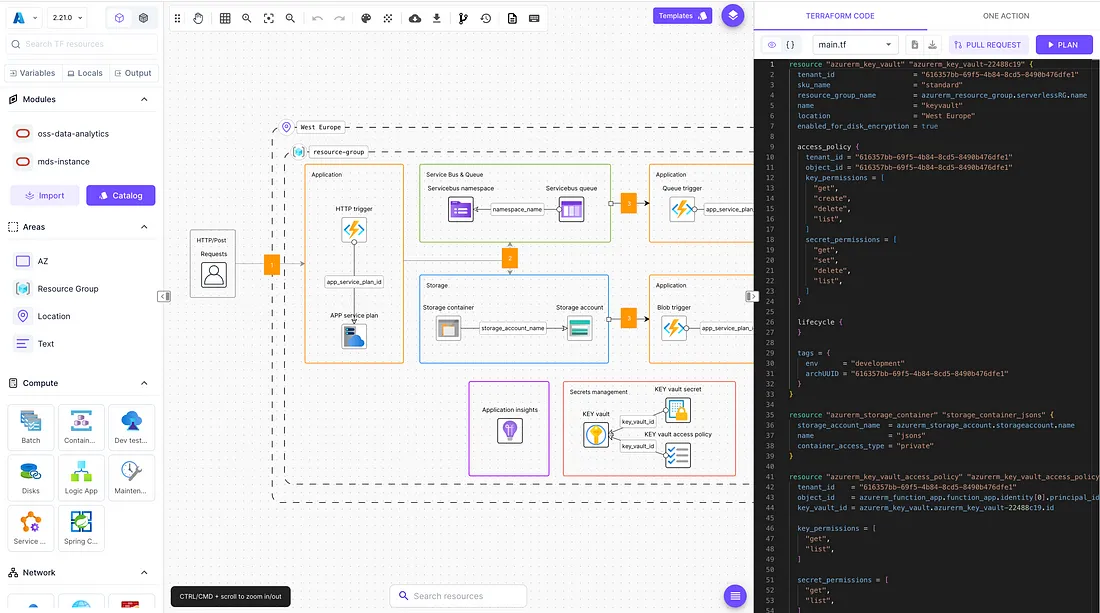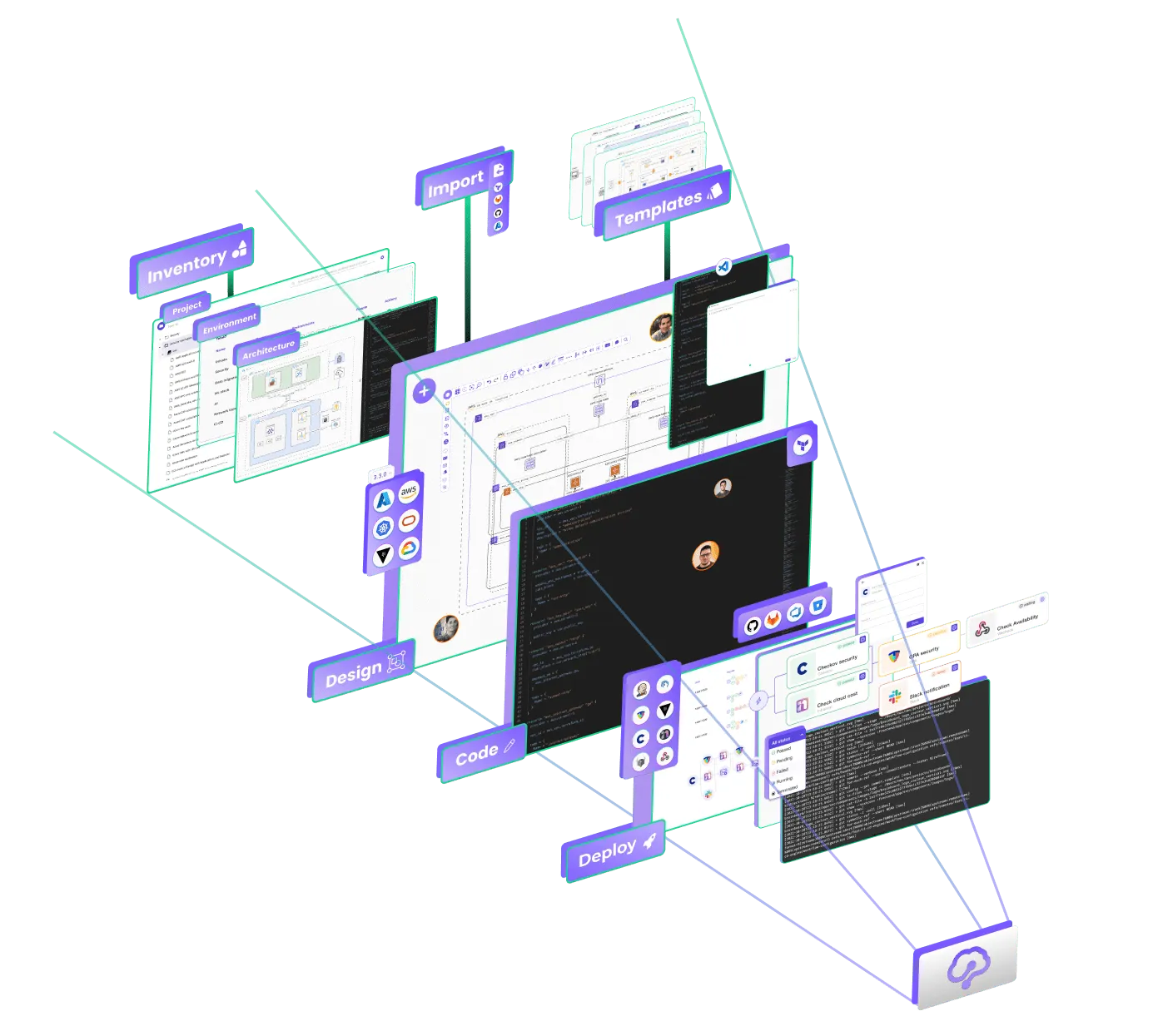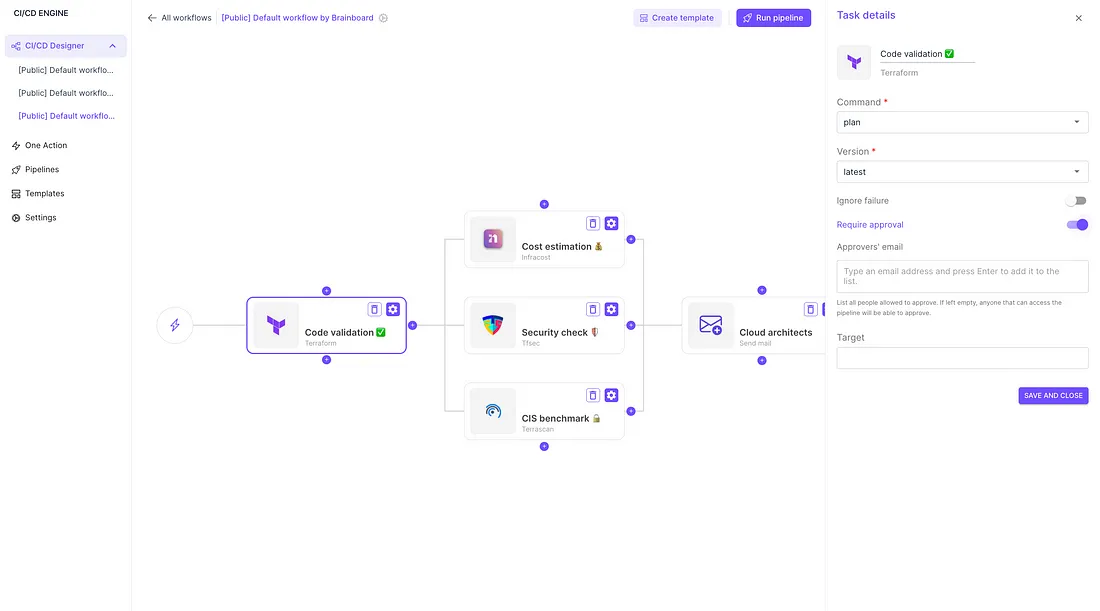What is IAC with Terraform
bron: Integraal overgenomen van medium
Origineel auteur: Mike Tyson of the Cloud (MToC)
In the evolving landscape of cloud computing, Infrastructure as Code (IaC) has emerged as a pivotal practice, streamlining the provisioning and management of IT infrastructure. Among the tools enabling this revolution, Terraform by HashiCorp stands out as a leader. This article delves into what Infrastructure as Code is, with a specific focus on Terraform, exploring its functionalities, benefits, and how it’s transforming the way organizations deploy and manage their cloud resources.
What is Infrastructure as Code
Infrastructure as Code is a key DevOps practice that involves managing and provisioning computing infrastructure through machine-readable definition files, rather than physical hardware configuration or interactive configuration tools. This approach enables developers and IT teams to automatically manage, monitor, and provision resources, reducing manual processes and promoting consistency and reliability in environments.
Understanding Terraform's Role in IaC

Terraform is an open-source infrastructure as code tool that provides a consistent CLI workflow to manage hundreds of cloud services. Terraform codifies cloud APIs into declarative configuration files. This section will explore how Terraform enables users to define and provide data center infrastructure using a high-level configuration language known as HashiCorp Configuration Language (HCL), or optionally JSON.
Key Features of Terraform
-
Declarative Configuration: Terraform uses a declarative approach, allowing users to specify what the desired end-state of the system should be. The Terraform engine then works to bring the environment to that state.
-
Modularity and Reusability: With Terraform, you can create modular and reusable components, enabling you to manage large-scale infrastructure with ease.
-
Provider Ecosystem: Terraform integrates with a wide range of cloud providers, such as AWS, Azure, and Google Cloud, as well as third-party services and custom in-house solutions.
Benefits of Using Terraform for IaC

-
Improved Consistency and Reliability: By codifying infrastructure, Terraform ensures that the deployment is repeatable and consistent across different environments, reducing errors caused by manual configurations.
-
Efficient Change Management: Terraform’s plan and apply steps provide previews of changes before they are applied, offering a clear understanding of the impact of these changes.
-
Scalability and Flexibility: Terraform’s ability to manage complex and large-scale infrastructure makes it an ideal tool for businesses scaling their operations.
Best Practices for Implementing Terraform on Brainboard

Implementing Terraform with Brainboard involves a strategic approach that maximizes efficiency and effectiveness in cloud infrastructure management. Here are some best practices derived from Brainboard’s insights:
-
Design First, Code When Needed: Embrace a design-first approach where the infrastructure design is prioritized before diving into coding. This ensures a clear understanding of the infrastructure requirements and how they align with business objectives.
-
Leverage Infrastructure-as-Code (IaC) for Cloud Computing: Use IaC practices to fully harness the benefits of cloud computing. This involves using Terraform to manage and provision cloud resources in a consistent, repeatable manner.
-
Effortless Infrastructure Management: Focus on seamless tracking, error reversion, and self-documentation. Terraform, when used with Brainboard, enhances the ability to manage complex infrastructures, making it easier to track changes, revert errors, and maintain documentation.
-
Use the Best AI Tools for DevOps: Incorporate AI tools that complement Terraform in the DevOps landscape. This integration can significantly enhance the efficiency of infrastructure management and deployment processes.
-
Adopt a Modular Design Approach: Break down Terraform configurations into manageable, reusable modules. This not only simplifies the management of large infrastructures but also enhances collaboration among team members.
-
Effective State Management: Properly manage Terraform’s state files, especially when working with Brainboard. This is crucial for accurately reflecting and managing real-world resources.
-
Version Control of Terraform Configurations: Store Terraform configurations in a version control system. This practice is essential for collaboration, tracking changes, and ensuring that all team members are working with the latest configurations.
-
Continuous Learning and Adaptation: Stay updated with the latest Terraform features and best practices. Regularly visit resources like the Brainboard blog for insights and updates in the field of cloud infrastructure and Terraform.
Conclusion
Infrastructure as Code represents a significant shift in the way IT infrastructure is managed, offering speed, efficiency, and accuracy. Terraform, with its powerful features and extensive provider support, stands at the forefront of this movement. By adopting Brainboard and following best practices, organizations can significantly enhance their infrastructure management processes, paving the way for more agile and resilient IT operations.
